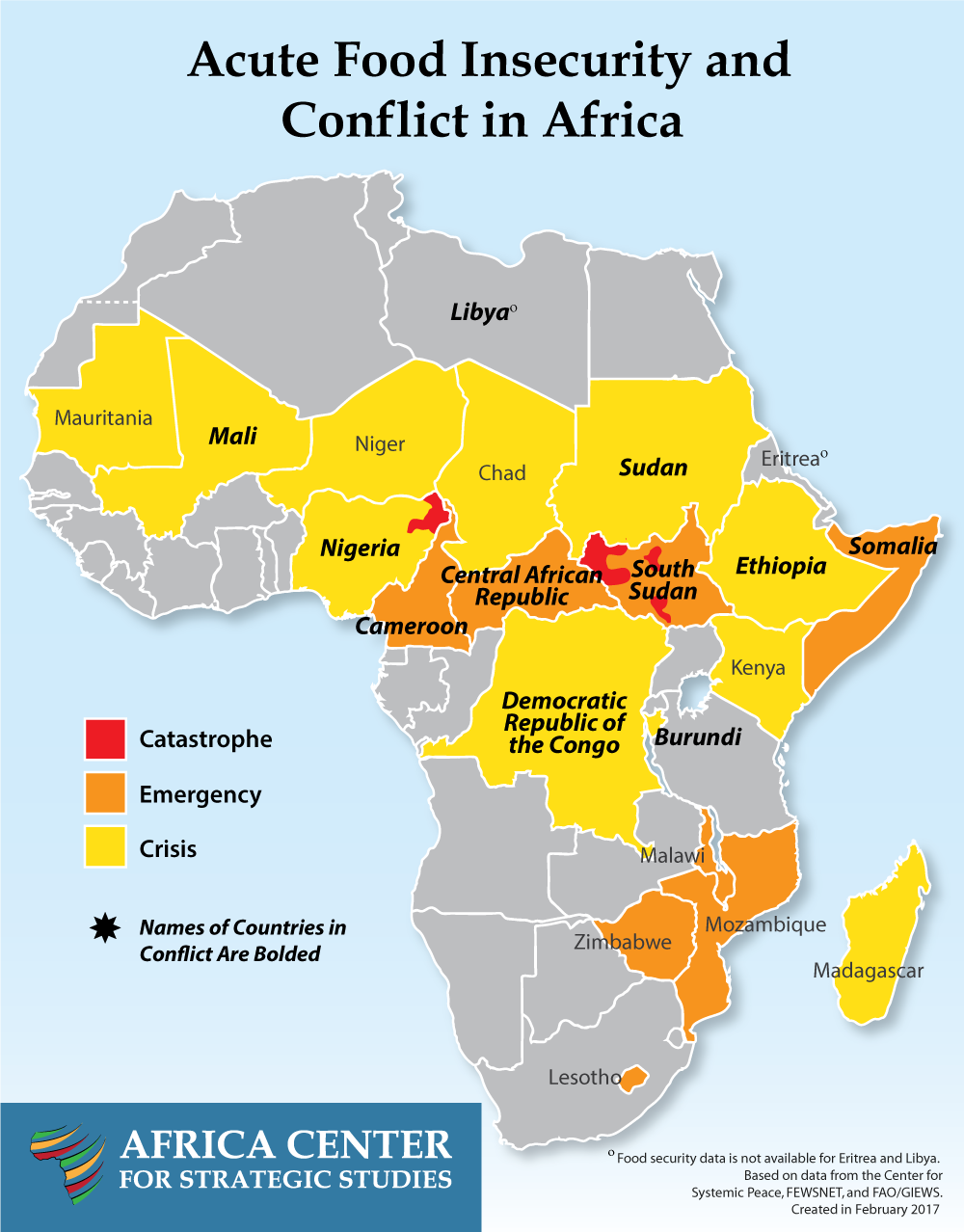
Click on image to download as PDF.
Historic droughts in East and Southern Africa have caused food prices to skyrocket to record levels, doubling the price of staple cereals in some areas. The areas of greatest food insecurity, however, are those affected by conflict. An arc of conflict-affected countries, largely overlapping regions of greatest food insecurity, spans the center of the continent from Somalia to Mali. In addition to disrupting production, conflict undercuts markets that would normally bring food to areas of greatest shortage. In some places, conflict prevents even conducting a full assessment of the level of food insecurity. And because countries in conflict lack the resilience or coping mechanisms of more stable areas, their food crises tend to last longer and have more lasting impact. In short:
- Nineteen African countries are facing crisis, emergency, or catastrophic levels of food insecurity
- Ten of those countries are experiencing civil conflict
- Eight of those ten countries are autocracies
- Those eight are also the source of 82 percent of the 18.5 million Africans that are internally displaced or refugees
Africa Center Expert
- Joseph Siegle, Director of Research
Additional Resources
- Africa Center for Strategic Studies, “The Effects of the South Sudan Conflict on Food Insecurity,” January 13, 2017.
More on: Burundi Democratic Republic of the Congo Food Security Mozambique Nigeria South Sudan Zimbabwe

